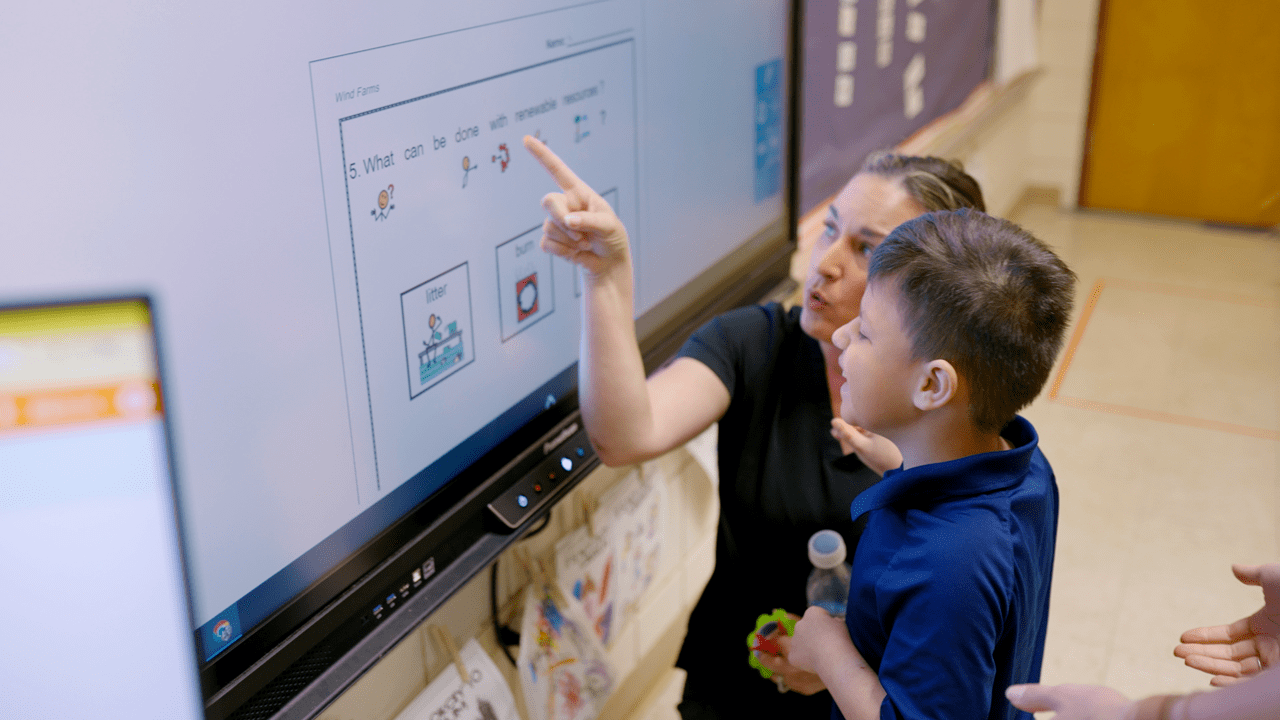Do you have questions?
We have answers.
Have you been searching for a way to help your students who struggle with math? Get answers to your questions about how Unique Learning System math courses support educators and students!
Overview
Where can I find the math courses?
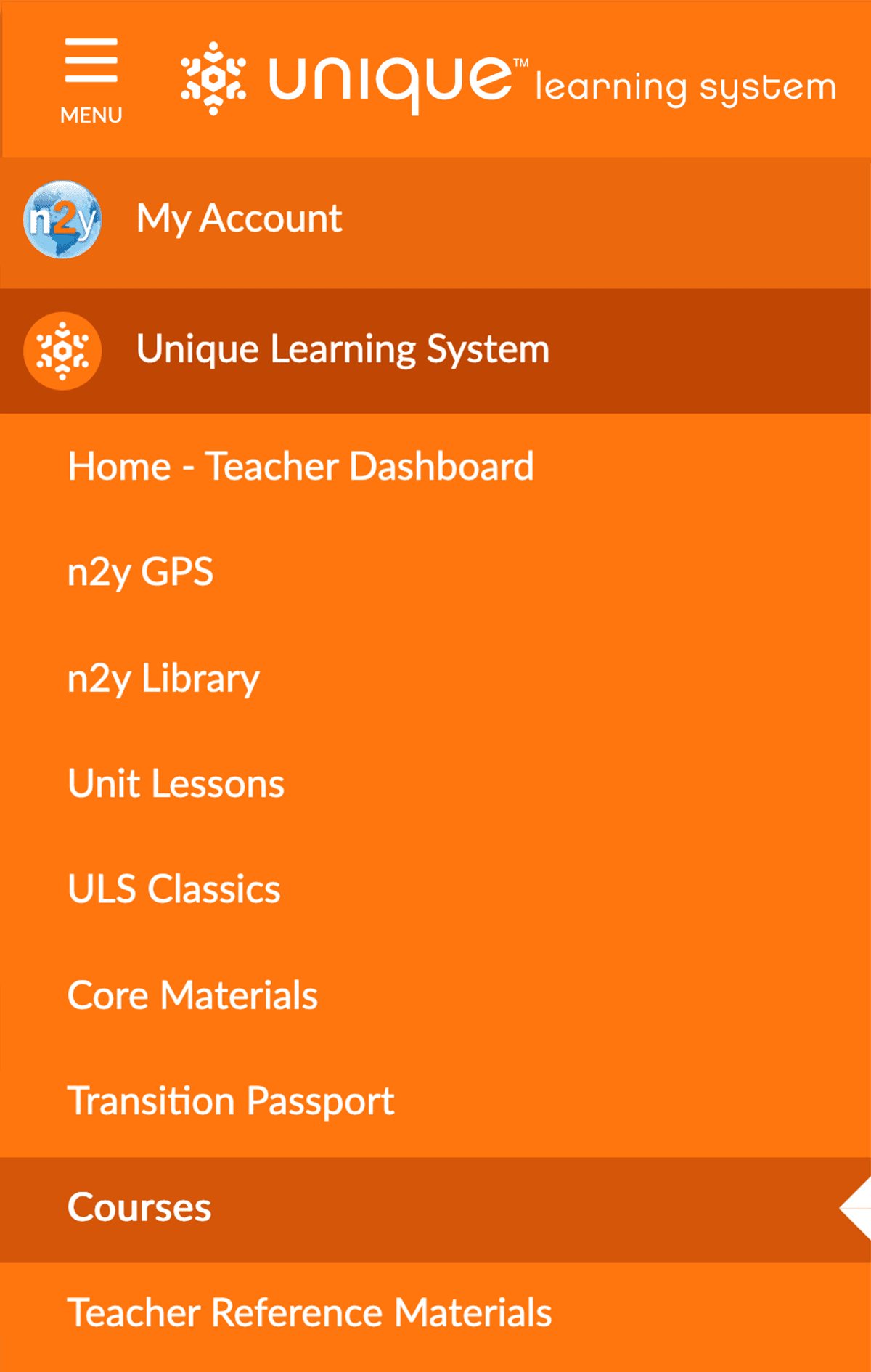
The math courses in Unique Learning System can be found in the Courses section for all grade bands.
What can I expect to find in math courses?
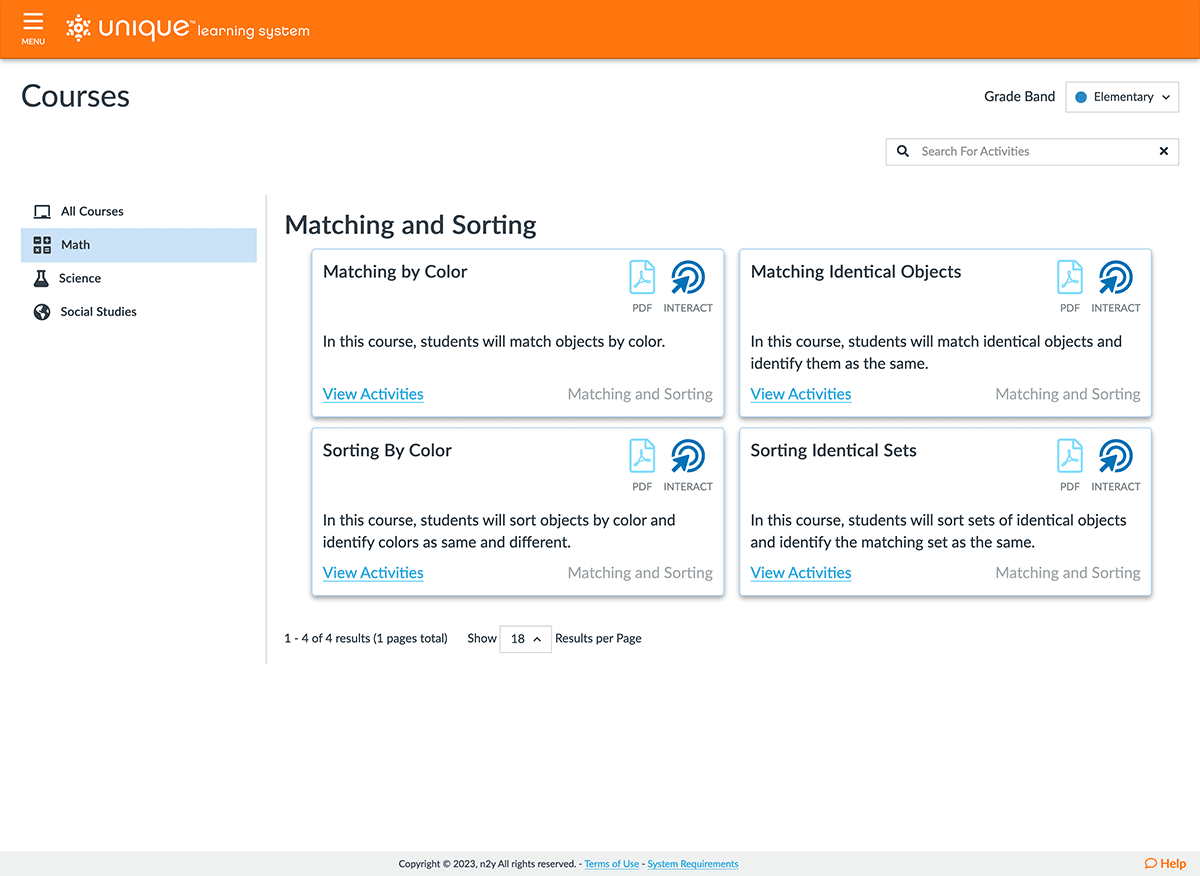
You’ll find standards-aligned, research- and evidence-based digital courses that use a multisensory approach to real‑world math problem‑solving.
Are the lessons differentiated for unique learners?
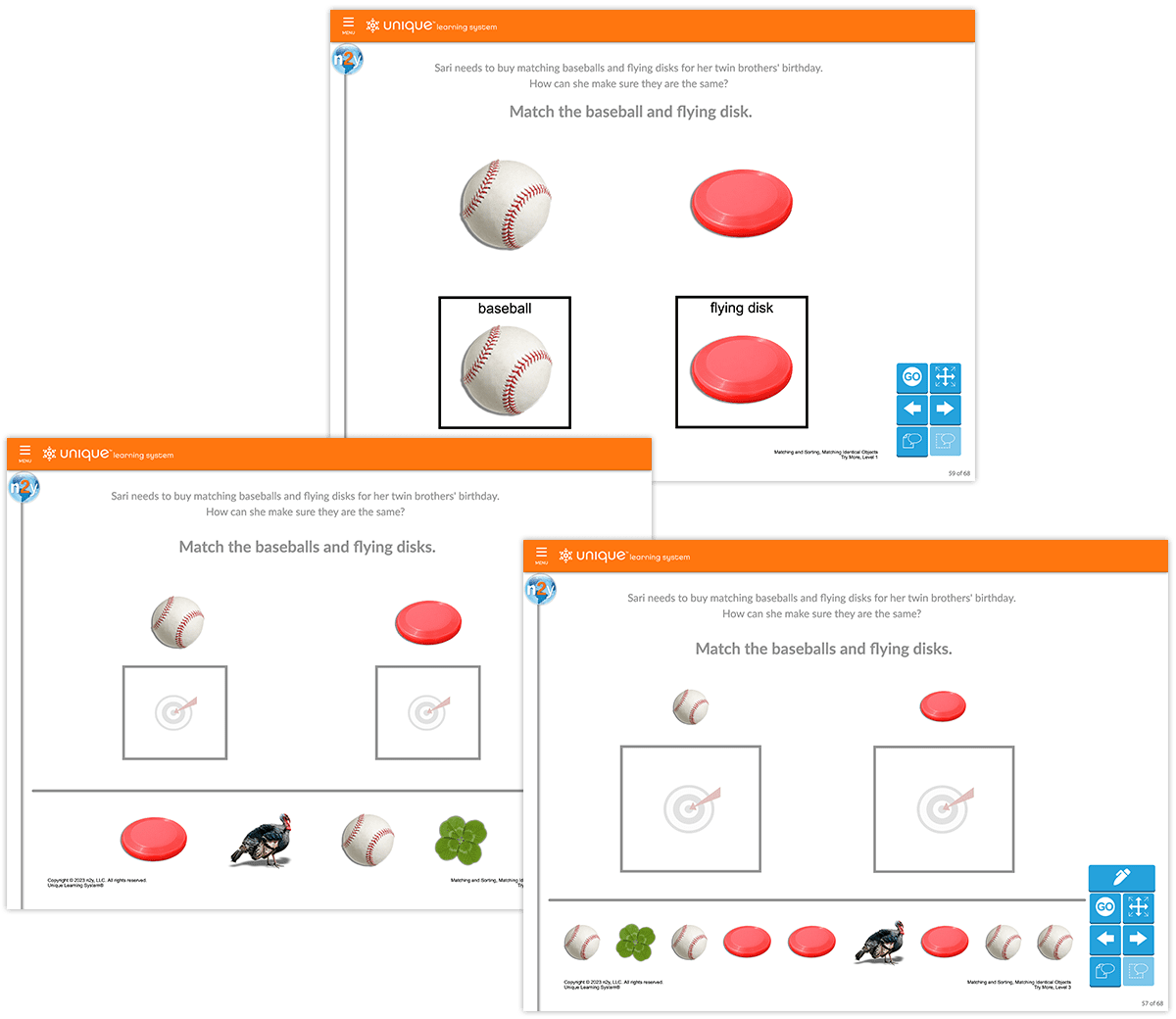
Yes! Like all Unique Learning System content, the courses are differentiated at three levels and are presented in a math skill continuum that builds on previously mastered concepts.
What level of teacher involvement is needed?
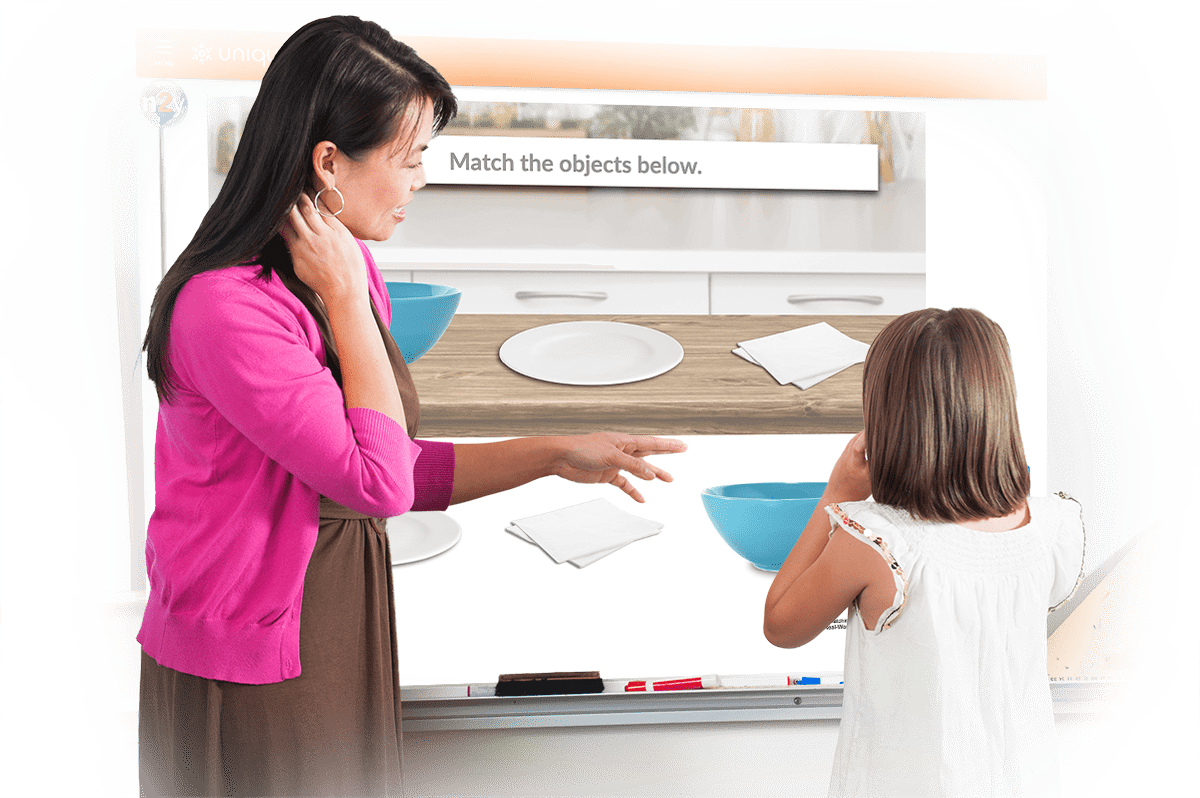
Math courses use a gradual release of responsibility model, which means learners have the opportunity to exercise greater independence as they progress and build on previously mastered skills. Lessons include pre- and post-assessments; teacher-facilitated, guided instruction; and student‑led, independent practice activities.
Integration with the Unique Learning System curriculum
How do math courses differ from thematic units in Unique Learning System?
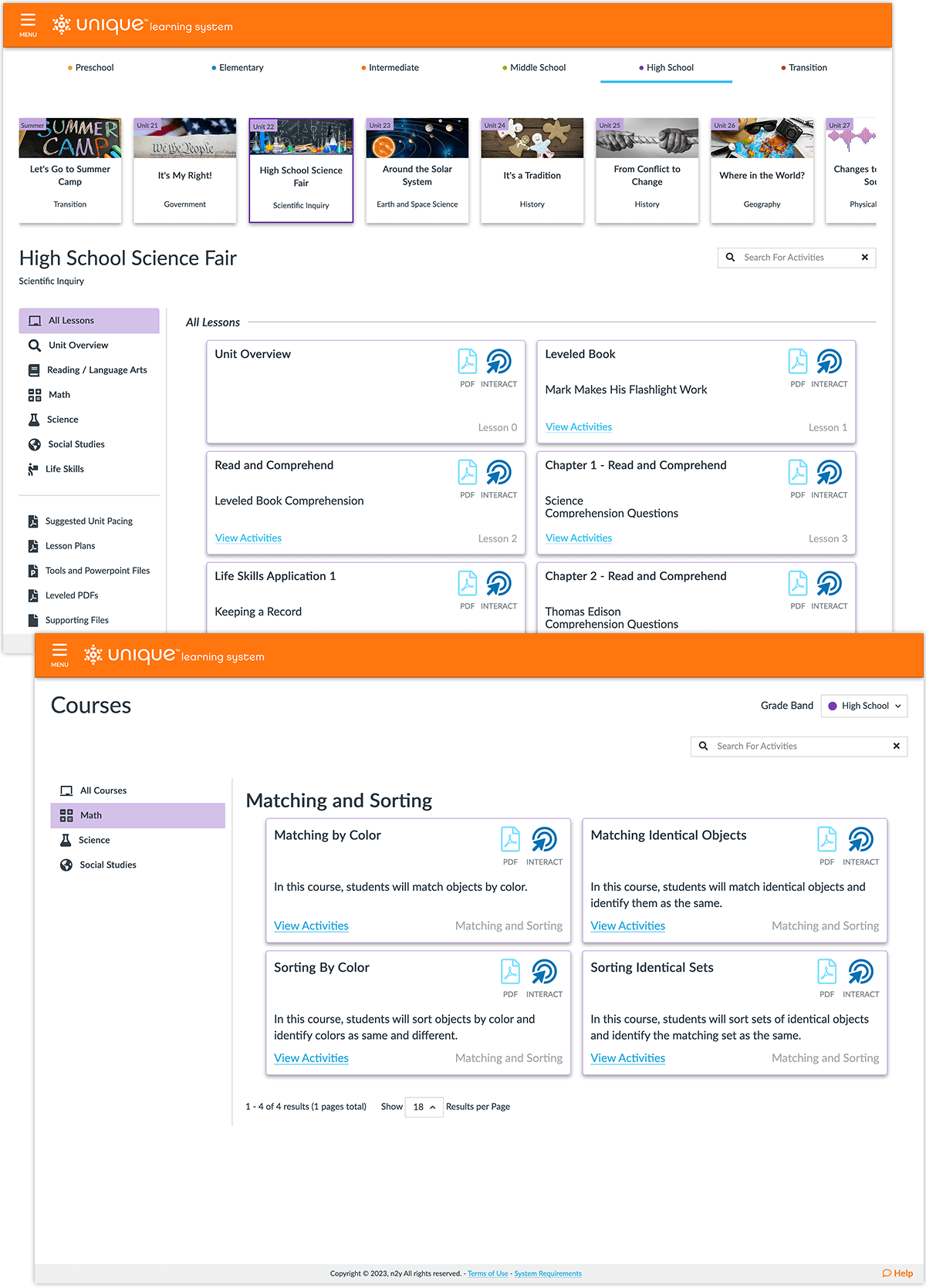
Math courses include more mathematical resources plus supplemental math instruction, all based on prescriptive foundational skill building. Math courses and thematic units work together to provide instructional opportunities that align with students’ individualized education program (IEP) goals.
What educational strategies do the math courses use?
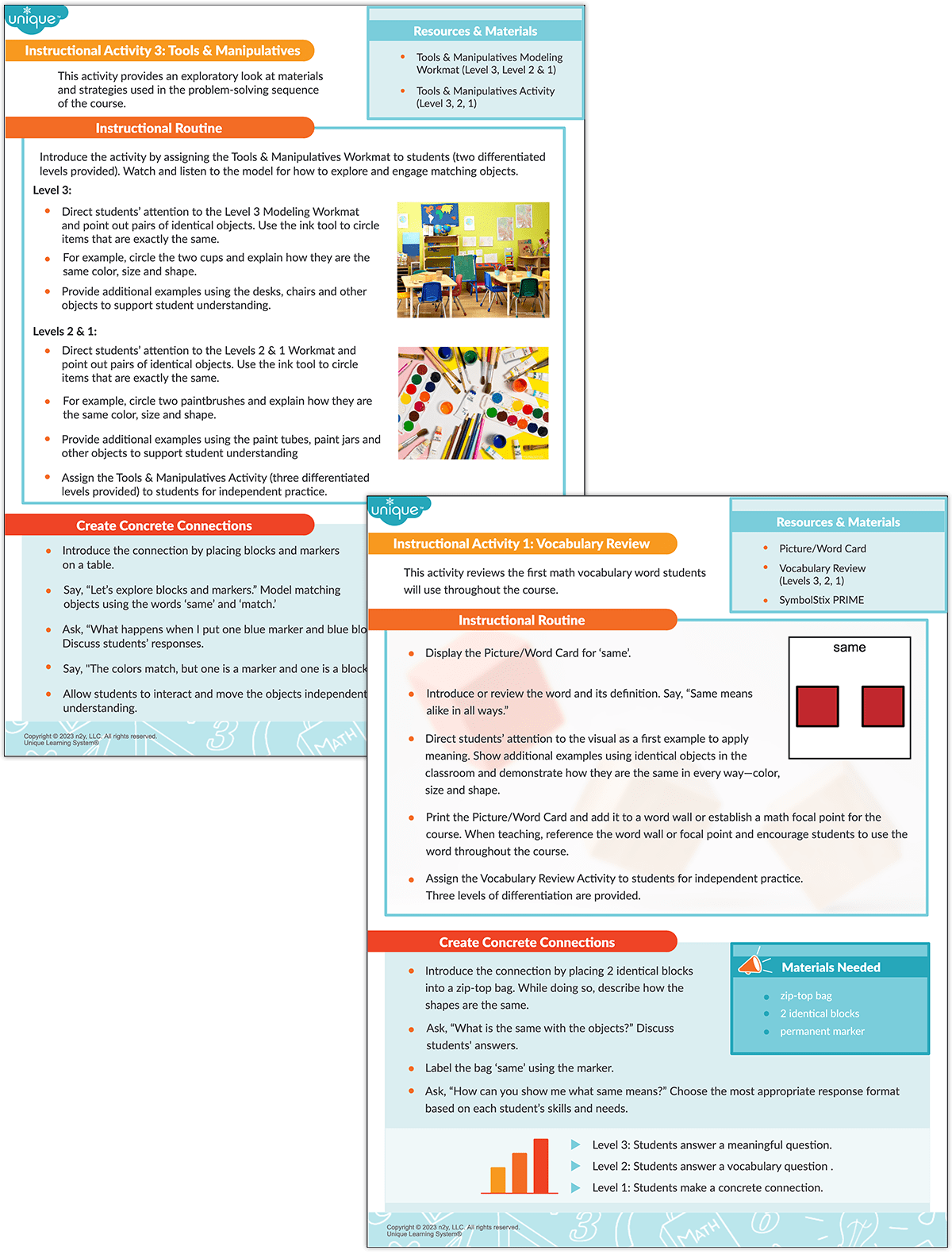
Unique Learning System math courses set students up for success in math. The lessons include opportunities for activating and building background knowledge, exploring concepts and tools, and guiding vocabulary acquisition. Using a gradual release of responsibility approach, the courses model concrete, visual, and abstract representations and generalize mathematical knowledge in real‑world contexts.
What’s an example of course content?
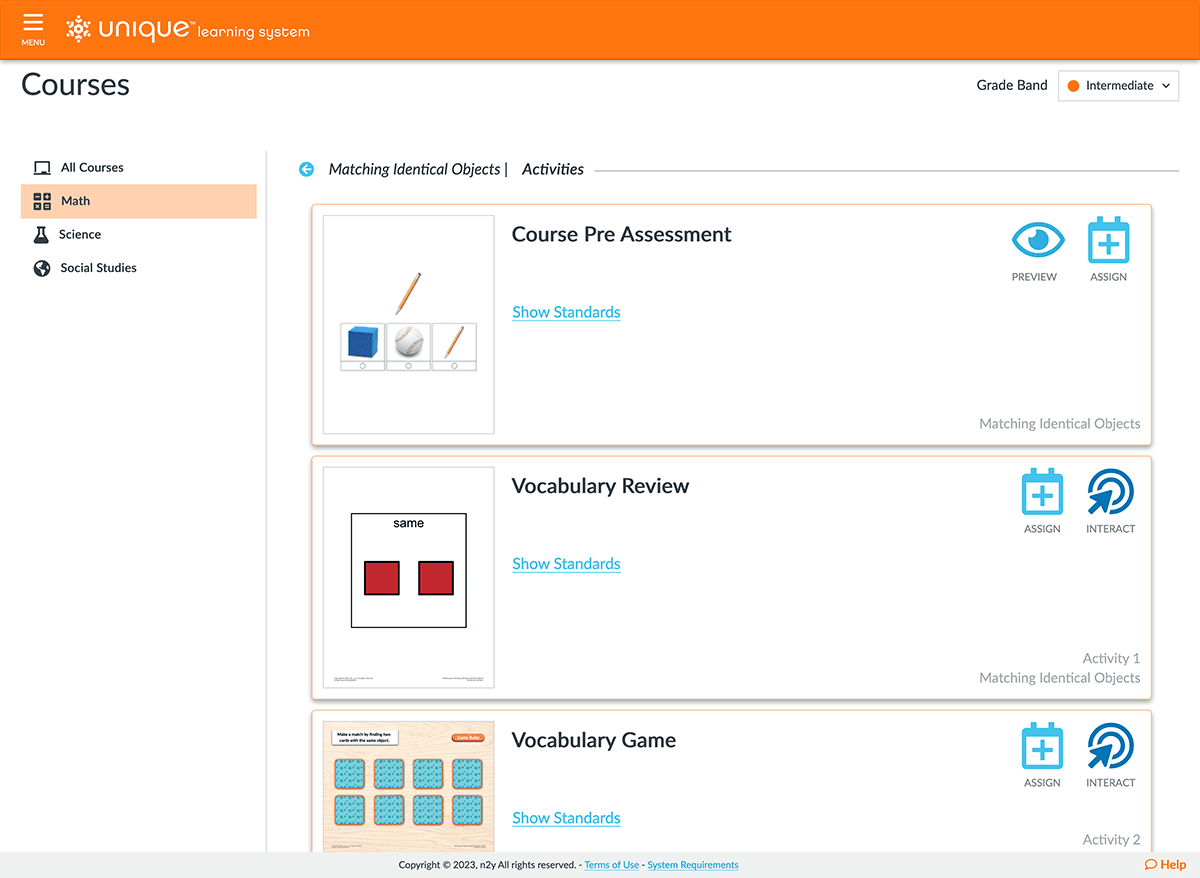
Matching Identical Objects features 15 activities that cover geometry, pre-readiness, numbers/operations, measurement, and pre- and post‑course assessments. Students build their skills in geometry as they match objects in sets based on a variety of attributes such as color, size, and shape, while also identifying and exploring shapes. Pre‑readiness activities engage learners in matching and sorting, and opportunities to work with numbers and operations allow students to build their early number sense. Some activities incorporate measurement attributes, providing students with practice to develop confidence in measuring.
What you get now
What kinds of lessons are in math courses?
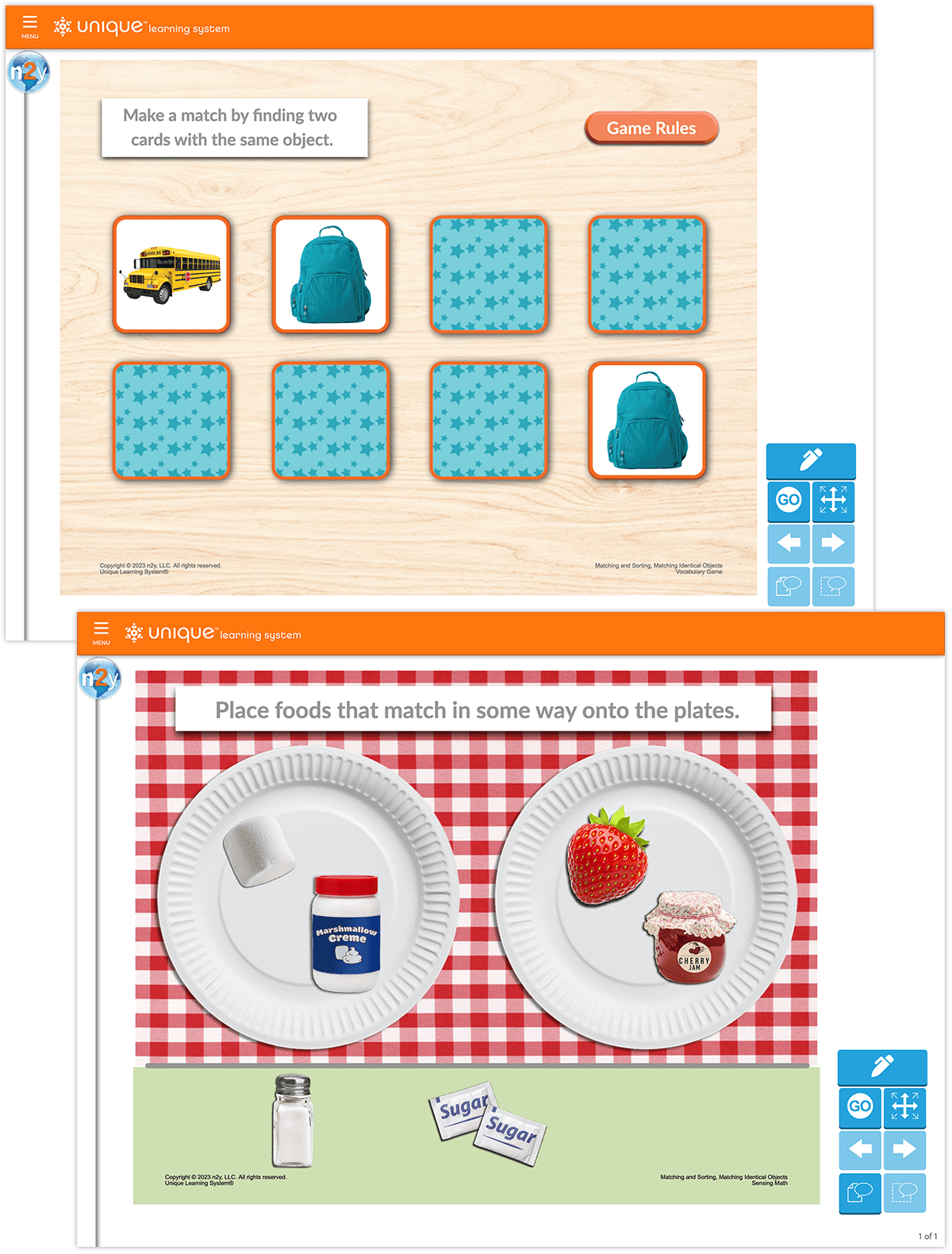
New, interactive games and activities get students engaged in learning about math. Enhanced visuals including 3D, realistic, and diverse images encourage student involvement. And when using these lessons in combination with a manipulatives kit, learners will feel success through multisensory learning experiences!
Examples of lessons
- Creating Concrete Connections with Manipulatives and Real Objects
- Placing Emphasis on Learning Language and Math Vocabulary
- Capturing Targeted Skill and Applying Problem-Solving to Skill and Real World
What assessments are in math courses?
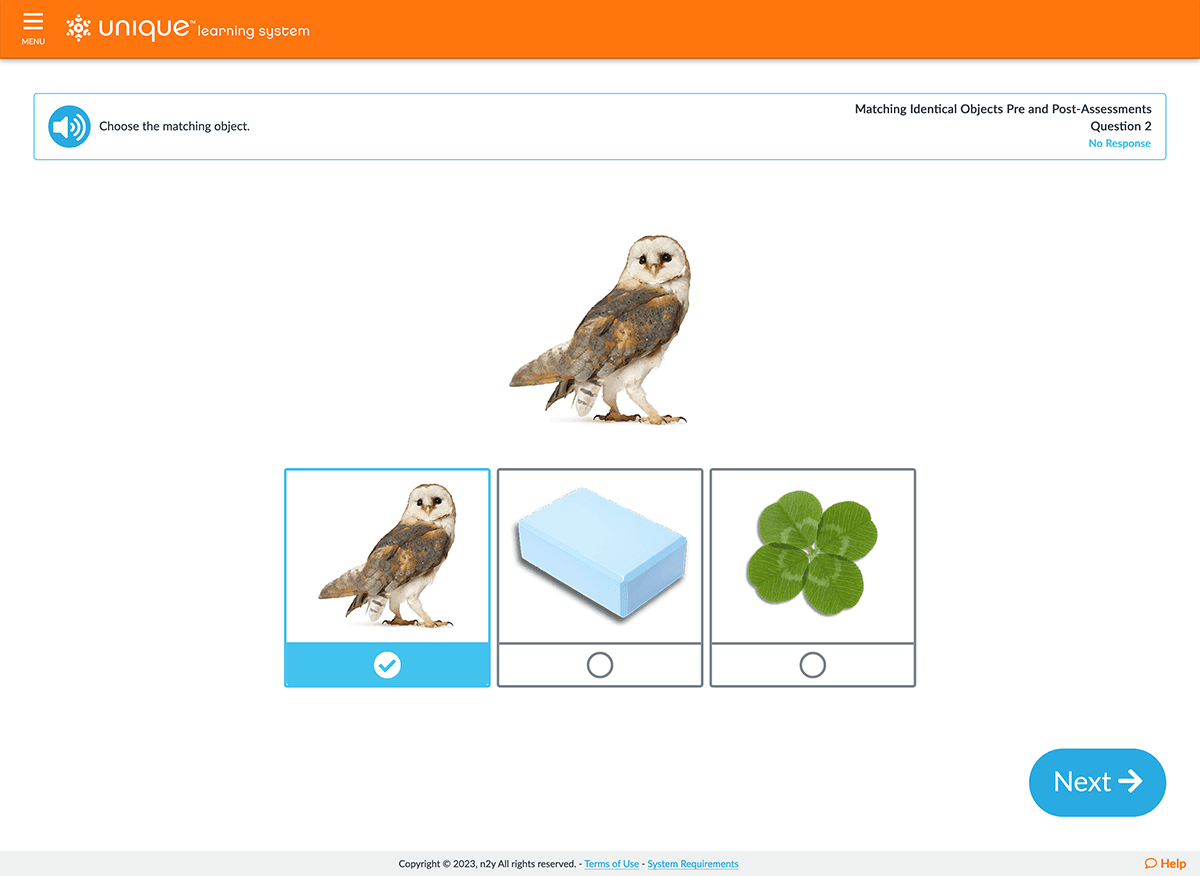
Pre- and post‑course assessments identify students’ mastery of targeted skills and support individualized instruction by identifying areas of need, suggesting differentiated levels of support, and reporting from pre- to post‑assessment.
What’s on the horizon in math courses?
We are continuously adding more supplemental math courses, so be sure to check the Courses section of Unique Learning System to see the latest additions!



